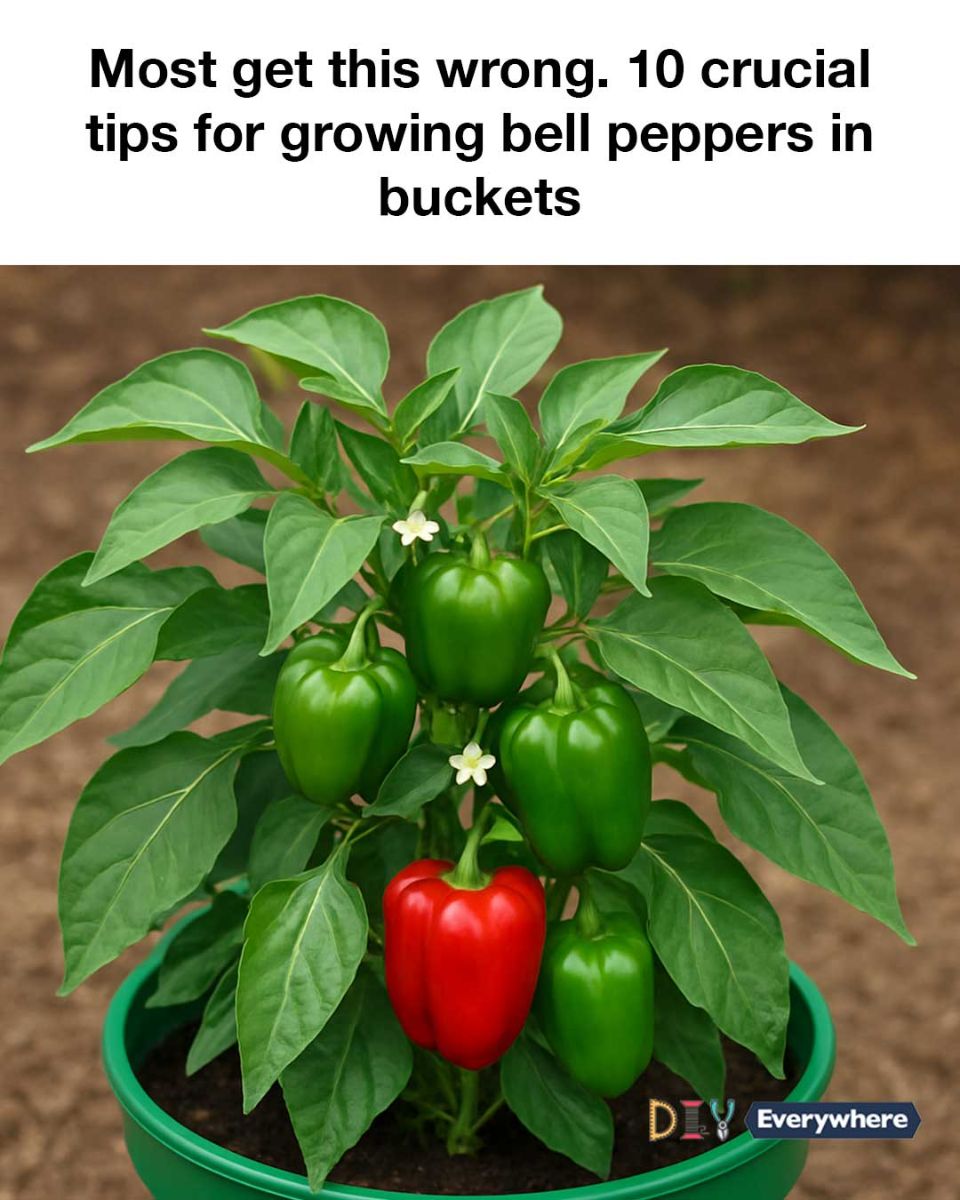ADVERTISEMENT
Consistent moisture is especially important once the plants begin flowering and setting fruit. A self-watering container or drip irrigation system can help maintain optimal moisture levels.
7. Fertilizing for Healthy Growth and Fruit Set
Fertilize your bell pepper plants every 2–3 weeks with a balanced water-soluble fertilizer (e.g., 5-10-10 or 10-10-10). Alternatively, mix a slow-release fertilizer into the soil at planting.
Bell peppers benefit from extra phosphorus and potassium during the flowering and fruiting stages. Avoid over-fertilizing with nitrogen, which can cause excessive leaf growth at the expense of fruit production.
8. Managing Pests and Diseases in Container Bell Peppers
Even in containers, bell peppers can fall victim to pests such as aphids, spider mites, and whiteflies. Check leaves regularly for signs of trouble, especially on the undersides, and use neem oil or insecticidal soap as needed.
Common diseases include bacterial leaf spot and powdery mildew. Provide good air circulation, avoid overhead watering, and remove any diseased leaves promptly to keep your plants healthy.
9. Supporting Bell Pepper Plants
As bell peppers mature, their fruits can become heavy and cause stems to bend or break. Use plant stakes, tomato cages, or trellises to provide support.
Insert supports at planting time to avoid damaging roots later on. Use soft ties to secure stems and keep plants upright as they grow.
10. Pruning and Harvesting Bell Peppers
Light pruning can help increase airflow and sunlight exposure to lower branches, improving overall plant health. Remove any yellowing or damaged leaves and trim crowded growth.
Harvest bell peppers once they reach full size and desired color—whether green, red, yellow, or orange depending on the variety. Use scissors or pruners to avoid damaging the plant. Regular harvesting encourages continued production.
11. Overwintering Bell Peppers in Buckets
Bell peppers are perennials in warm climates and can be overwintered indoors in cooler regions. Before the first frost, prune the plant by about one-third and move it to a sunny indoor space.
Advertisement
Cut back on watering and stop fertilizing during winter dormancy. With proper care, your plant can survive the winter and be transplanted back outside in spring for another productive season.
ADVERTISEMENT
